






After the war the Zeemanshoop was given a thorough repair by the Dutch Navy and then returned to the KNRM. It temporarily replaced the Neeltje Jacoba
at IJmuiden and after that was stationed in Enkhuizen. It was then in
service at Oostmahorn, Harlingen, Scheveningen and Hindeloopen
(1952-59), Nijkerk (1961-65) and Urk (1966-71). During her five years
stationed at Urk she was called out 99 times and 189 people
were saved, a worthy end to 46 years of active service.
During
her time as a lifeboat she was called out 224 times and saved 341 lives
but is mainly remembered today as the lifeboat hijacked by four
university students at Scheveningen on the 14 May 1940 who started her
temperamental Kromhout two cylinder engine with the help of a
fisherman and left for England with 42 mainly Jewish passengers.
After
she was decommissioned she changed hands several times and each owner
made changes to suit his own requirements. The last owner, Theo de
Boer, lived on the island of Ameland, one of the Friesian islands in
the northern part of Holland, a region with its own distinct culture
and language. Theo de Boer was one of several owners of former
lifeboats living on Ameland. Theo de Boer with his friends
Jaap Boersma (see below) and Klaas Sinnema (the owner of the George Urie Scott, a former Scottish lifeboat) established, the Museum Harbour Zeemanshoop Foundation, named in honour of the famous lifeboat.
Theo de Boer travelled as far as Gothenburg in the Zeemanshoop proving that after being fitted with a six cylinder Volvo Penta engine she was still a safe and seaworthy boat - but not with 46 men and women standing on deck! Tragically Theo de Boer died in 2009 when he was only 49.
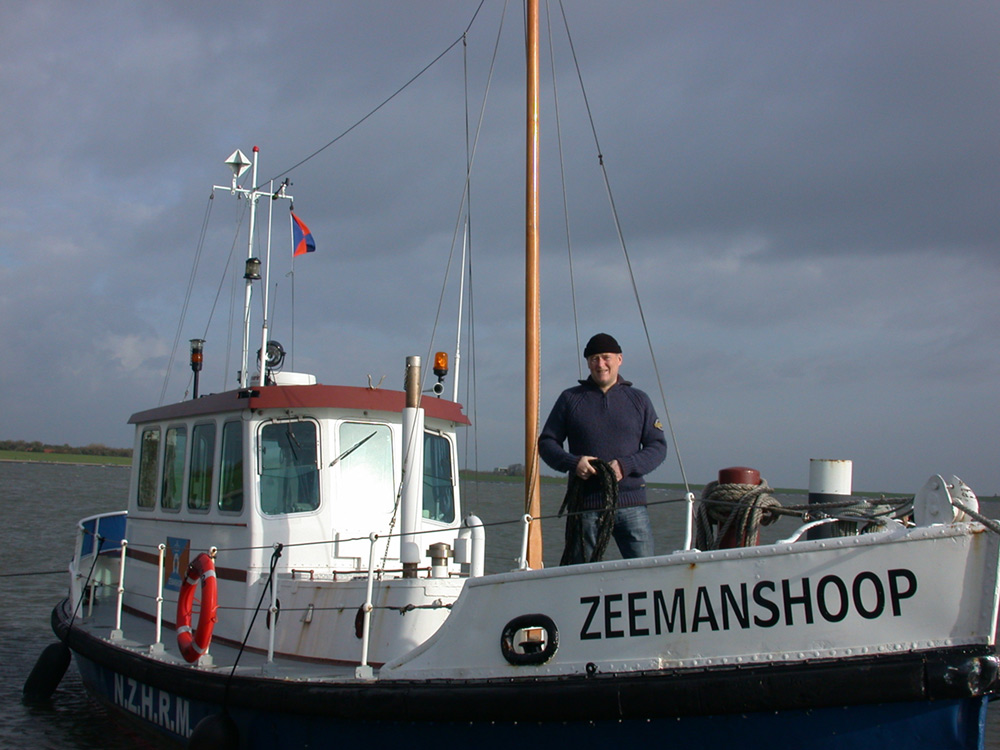
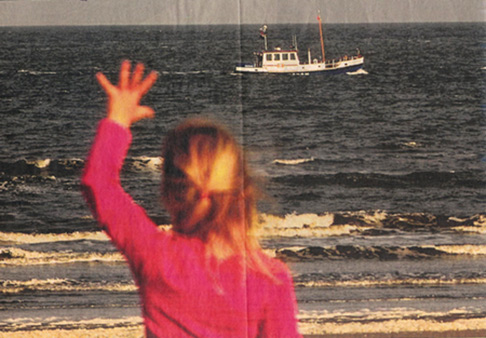
When Theo de Boer died the Zeemanshoop was laid up for five years until she was bought by the Neeltje Jacoba 1929 Foundation in February 2015 which intended to make her, together with the famous Neeltje Jacoba, the main attraction of the lifeboat museum, where she would be a real eye-catcher. The province of Friesland and the municipality of Ameland are the main sponsors and €42,500 has been promised but more is needed.
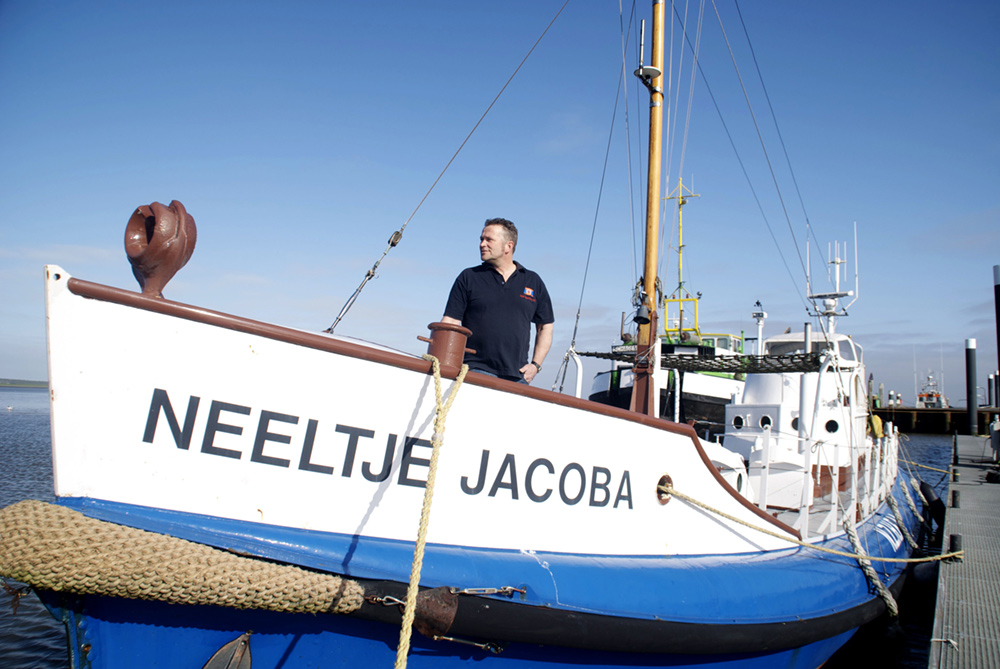
Jaap Boersma on the deck of the Neeltje Jacoba which was bought and restored by the Neeltje Jacoba 1929 Foundation which is now the owner of the Zeemanshoop
courtesy of Jaap Boersma
The Foundation has the original plans of the Zeemanshoop,
the original copper cockpit
has been traced on the neighbouring island of Terschelling and bought
from the owner and an identical Kromhout engine, air compressor and air
cylinders for starting the engine has been bought and transported to
the Nimos company of Niels Mulder at Zaandam near Amsterdam where the
restoration work will be done.

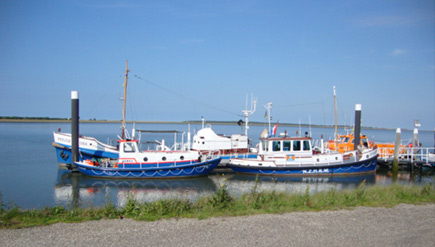
The Museum contains the Neeltje Jacoba (1929) and three other privately owned Dutch lifeboats and the Scottish lifeboat mentioned above, the former George Urie Scott, which was stationed at Lochinver (Scotland) and Rosslare (Ireland), and is now renamed Highlander. Their owners are all members of the Museum Harbour Zeemanshoop Foundation which sees that the lifeboats are looked after and maintained. The Friesian islands are popular with tourists and Ameland has 600,000 visitors a year. They come by ferry from a village called Holwerd on the mainland. There are at least six ferries a day throughout the year and the crossing takes 45 minutes. The lifeboats also visit the mainland to attend rallies of decommisioned Dutch lifeboats organised by the Oude Reddingsglorie (the Dutch historic lifeboat association).
On the 24 November 2014 the Zeemanshoopsailed
across the shallow treacherous Waddenzee where the position and
shape of the gullies and sandbanks are constantly changing, especially
when there are storms, to the port of Harlingen on the Dutch mainland
and from there to Hoorn on the IJsselmeer and she is now at Kramers
shipyard at Zaandam being restored
by Nimos helped by a small team of enthusiasts. The cabin has been
removed. The most urgent task remaining is the fitting of the Kromhout
engine which has not been used for fifty two years, the overhauling of
the propellor shaft and the fitting of a new propeller but work also
needs doing on deck (riveting, renewal of the fender and painting the
hull in her original colours).
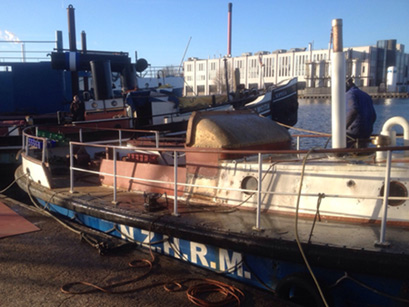
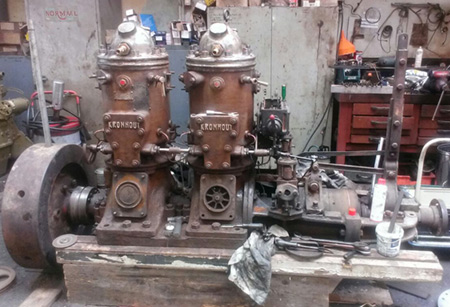

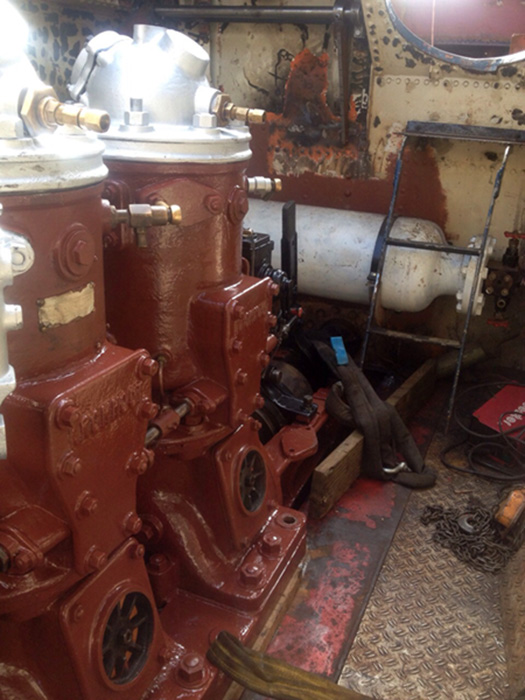
I received this mail from Jaap Boersma on the 10 May 2015:
"The Kromhout started at the first attempt on liberation day! We are still painting, tomorrow we leave at 6 am to Zaandam. I don’t expect the painting will be finished but we do our best to get as far as possible. See you Thursday!"
I flew to Amsterdam on Wednesday 13 May and when I sat down to dinner with the families of the men and women on the Zeemanshoop that evening I still did not know whether the Zeemanshoop had successfully completed the journey along the Dutch coast and entered the harbour at Scheveningen in time for the reunion the following morning.
The presence of the Zeemanshoop at the following days reunion of the familes of the 46 men and women whose lives it saved was for many of them the highlight of the reunion. They were able to hear the hypnotic throb of its two cylinder engine as it took them on short trips round the harbour of Scheveningen. You can join them on one of these trips and listen to the beat of the engine by clicking on this link to a short film.The Neeltje Jacoba 1929 Foundation
welcomes donations to restore the Zeemanshoop
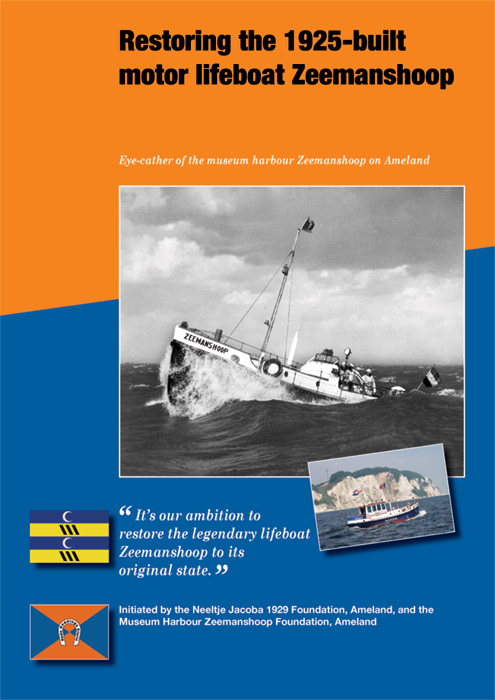
Board of Trustees
Albert de Hoop, Mayor of Ameland
Roemer Boogaard, Managing Director of KNRM
Royal Dutch Lifeboat Society
Hans Starkenburg, Managing Director of National Lifeboat Museum Dorus
Rijkers in Den Helder
Board
Jaap Boersma, Chairman
Wietse de Vries, Treasurer
Klaas Sinnema, Secretary
Ynse van der Veen, member
Technical consultant
Niels Mulder (Nimos Motoren)
Part-funded by
Fryslân (Friesland) Province
Ameland Municipality
Read about the